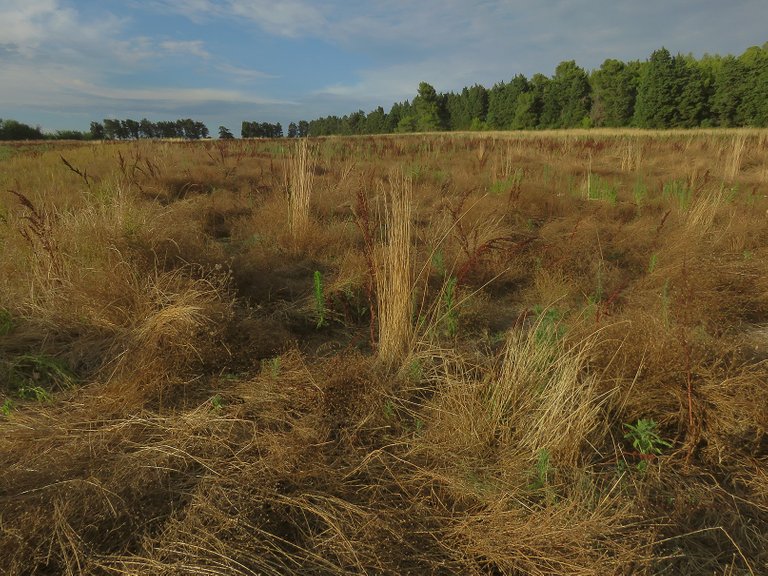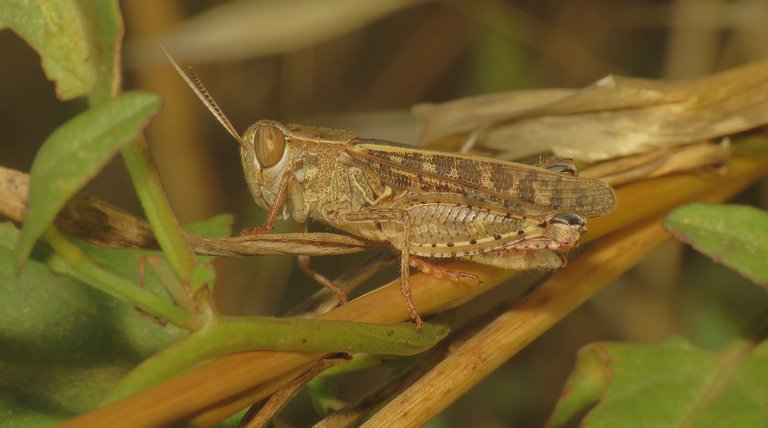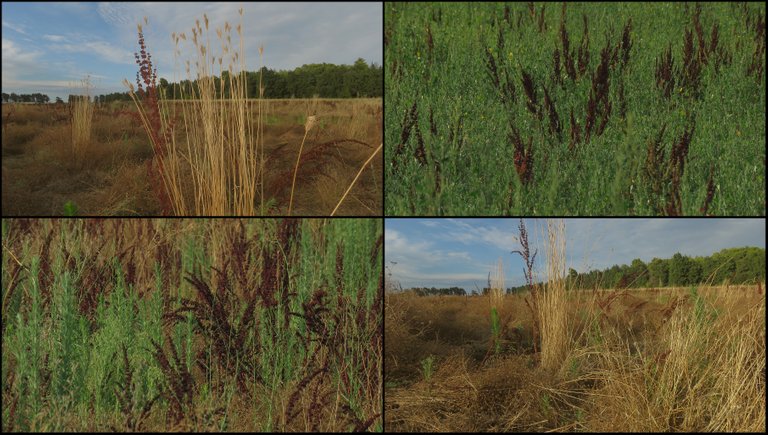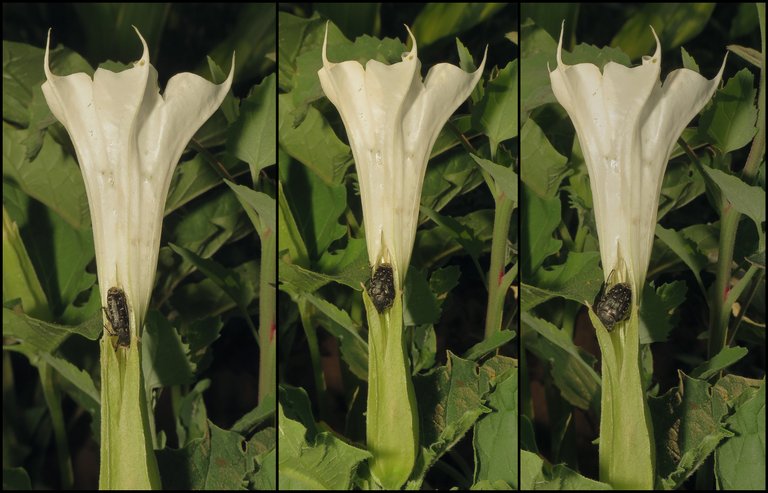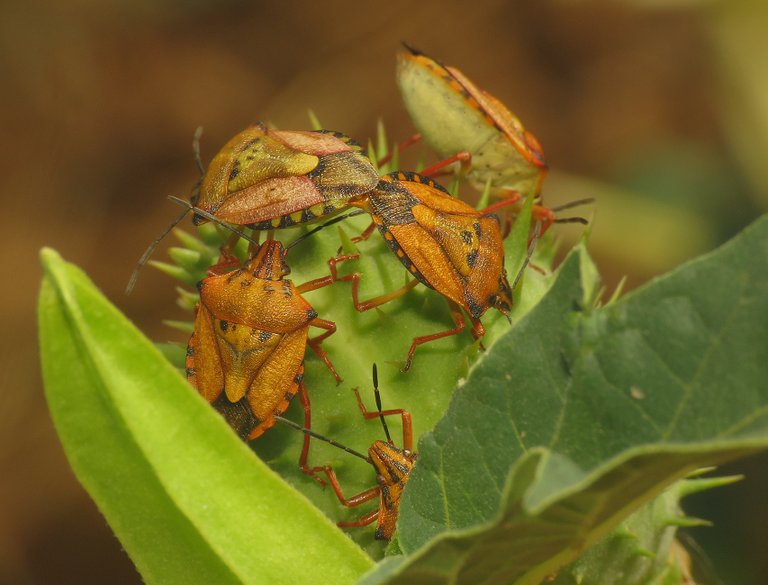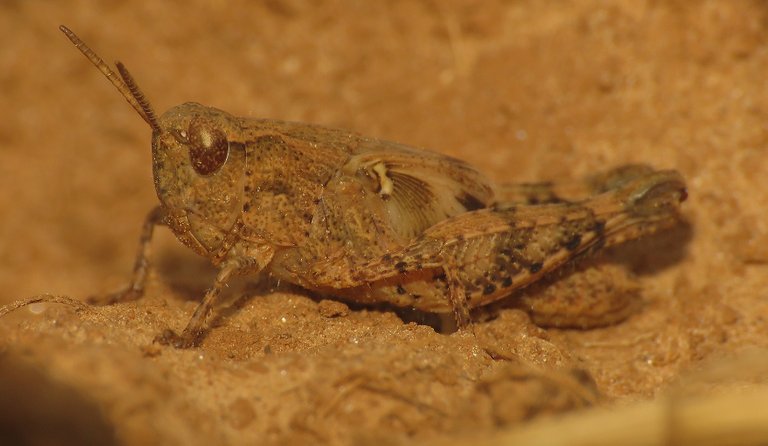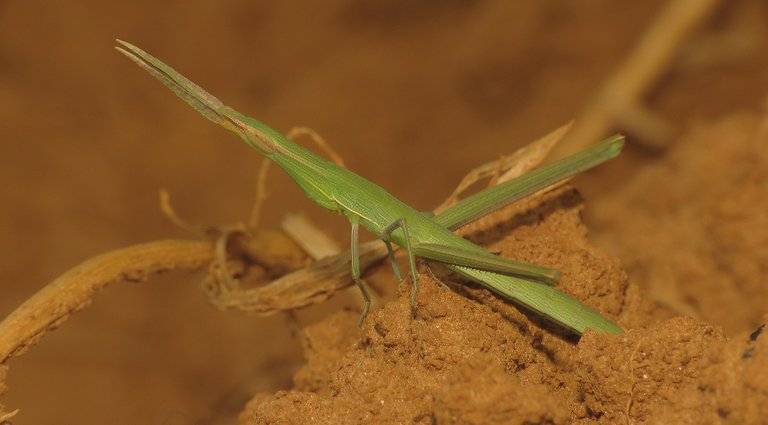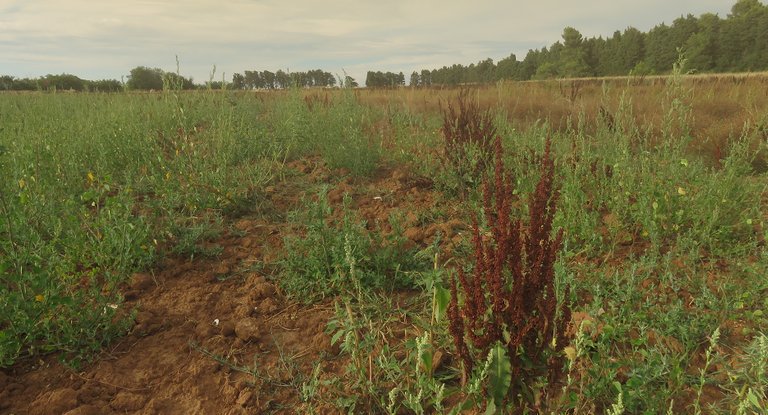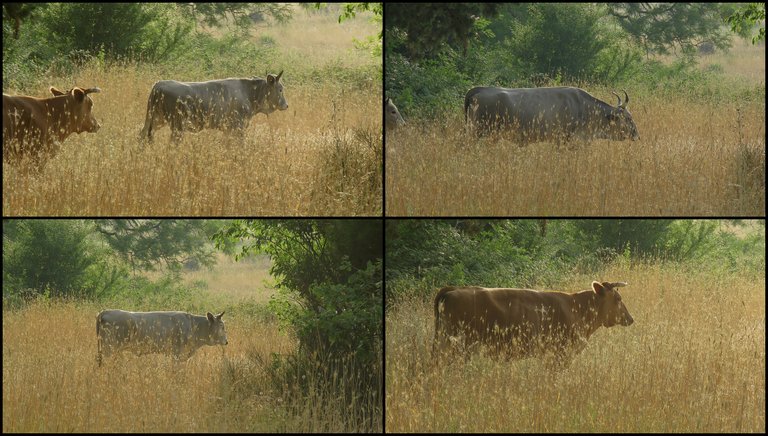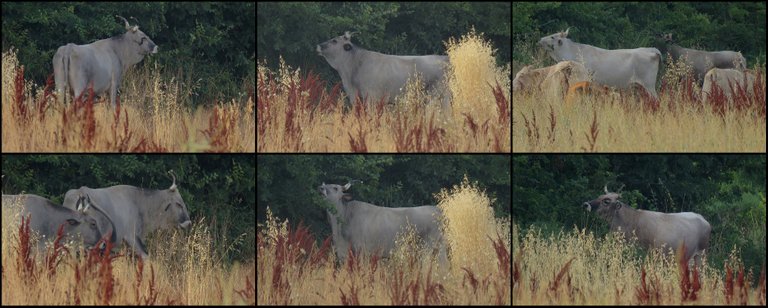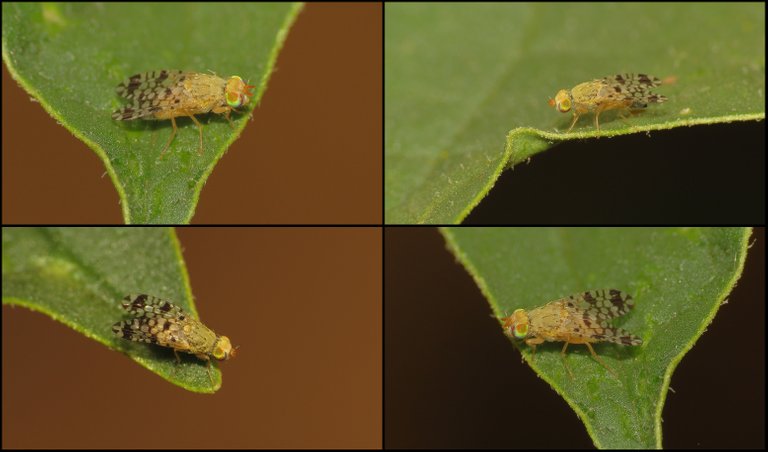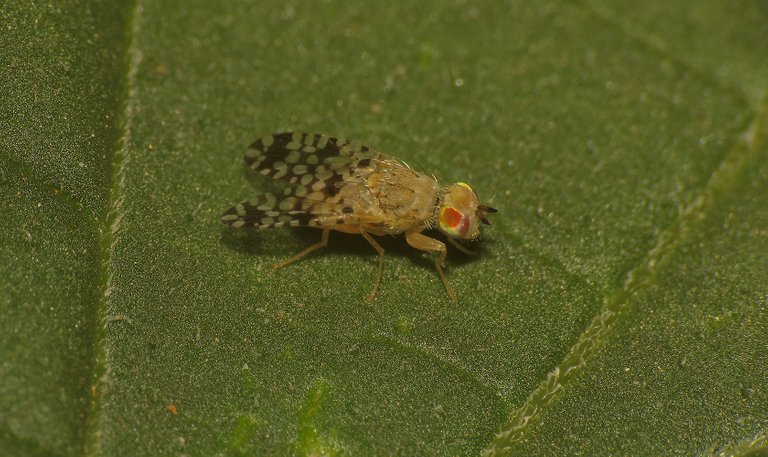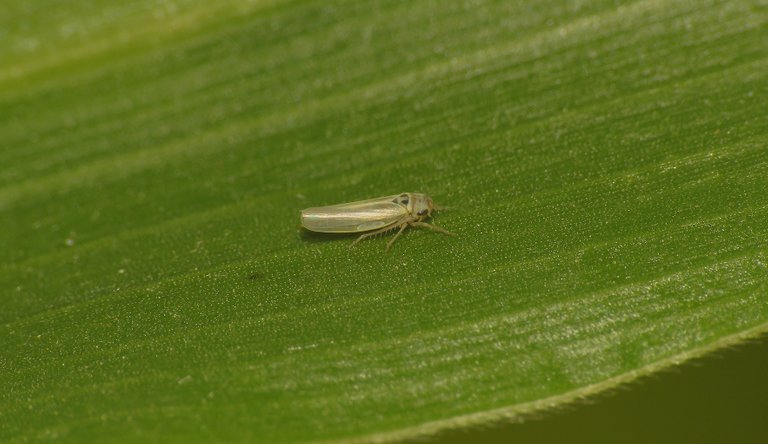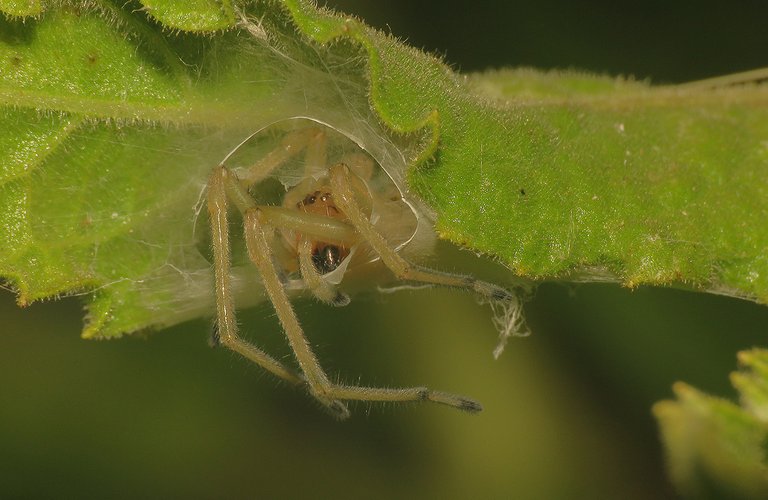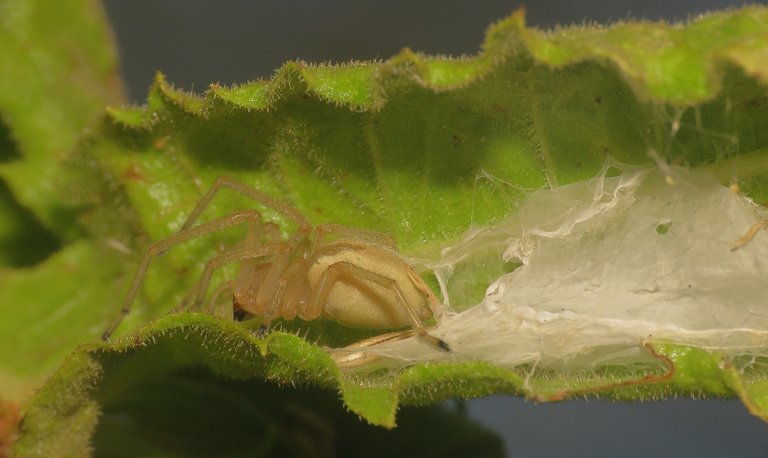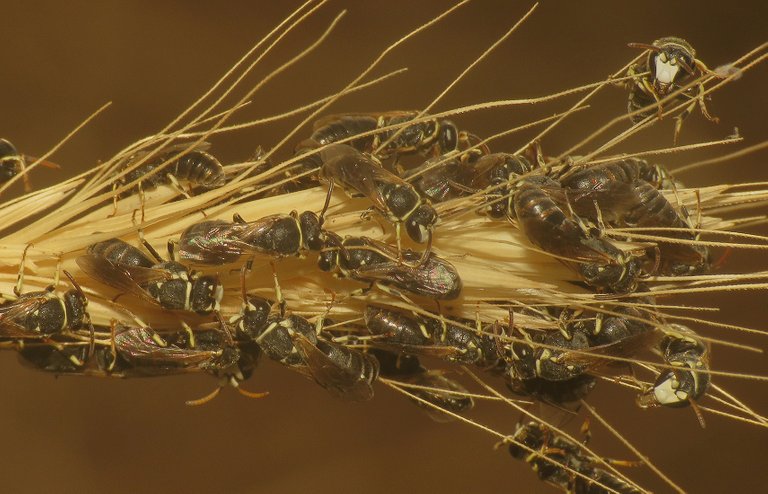The photographs in this post were taken in July of 2021 ...
... on the fields and meadows a couple of kilometers from the village of Liznjan, in between that village and the sea.
It was a hot summer afternoon. Many plants, especially grasses, were dried out completely ...
... and various grasshoppers were the most numerous insects there.

Here you can see a young Locusta migratoria grasshopper. This is still a nymph, but it's a pretty big one. Its wings are small but clearly visible. It looks like this insect is about halfway to its adulthood.
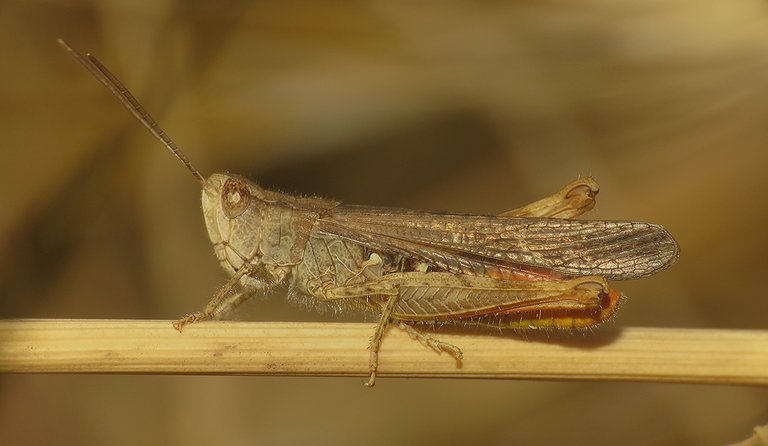
In this photograph, you can see a completely developed, adult Chorthippus maritimus grasshopper.
This is the Calliptamus italicus.
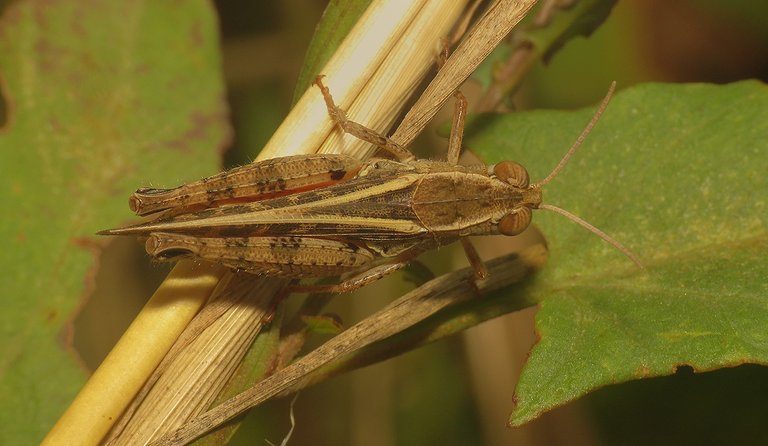
Here you can see how it looks from above.
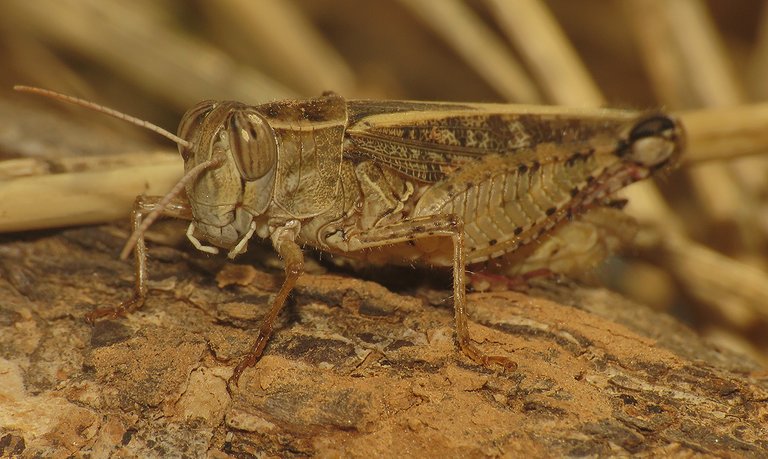
This species is quite variable in size and color, so in these photographs, you can see only the version of Calliptamus italicus which is the most common one in this area.
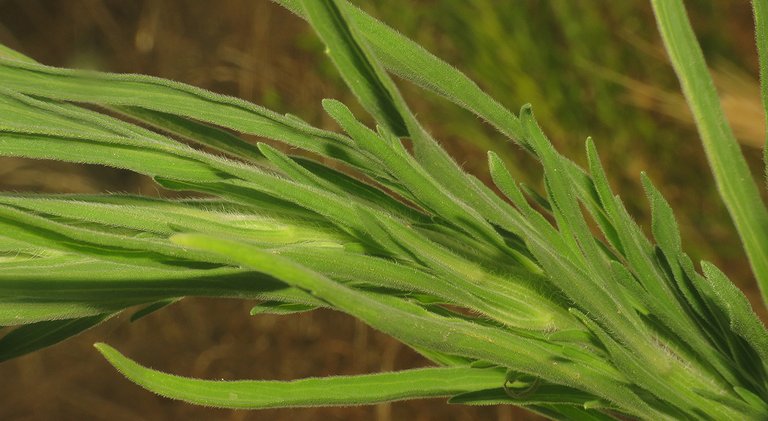
Here you can see the fresh sprout of some plant that I wasn't able to identify, one of the green ones ...
... mixed with prevalently dry vegetation in various shades of brown and yellow.
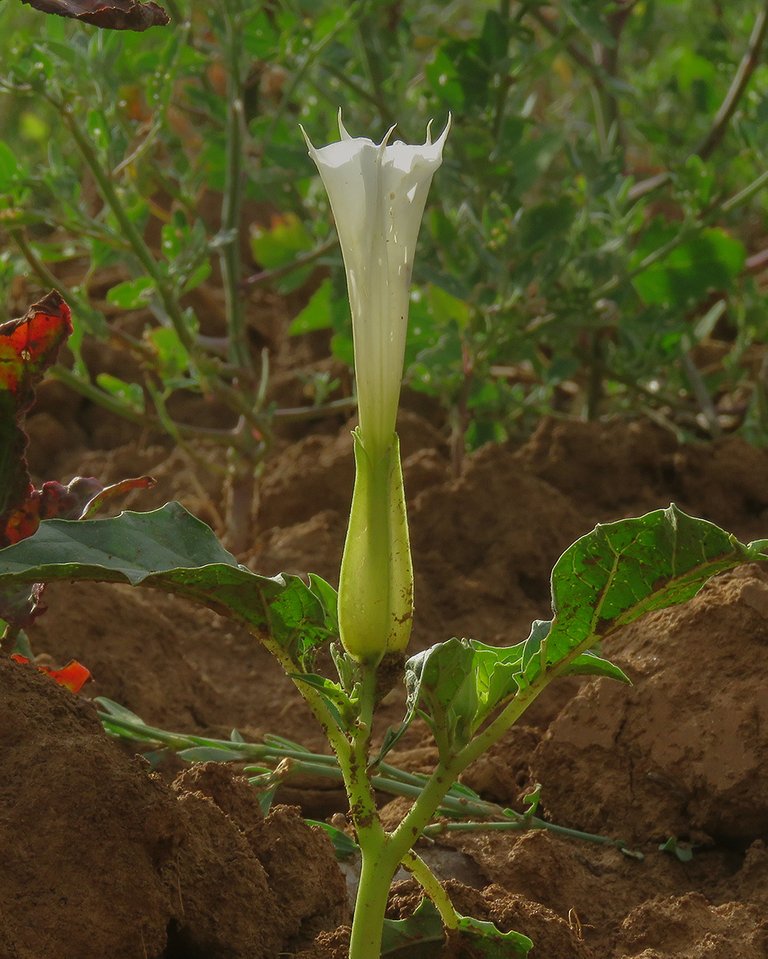
Here you can see another green and juicy plant ...
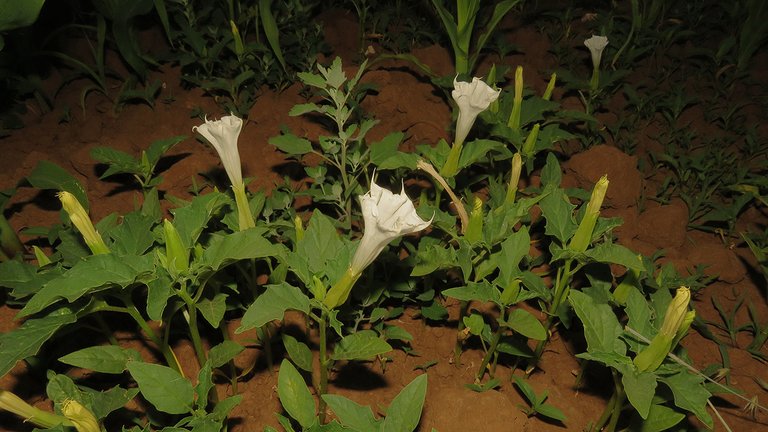
... the Datura stramonium.
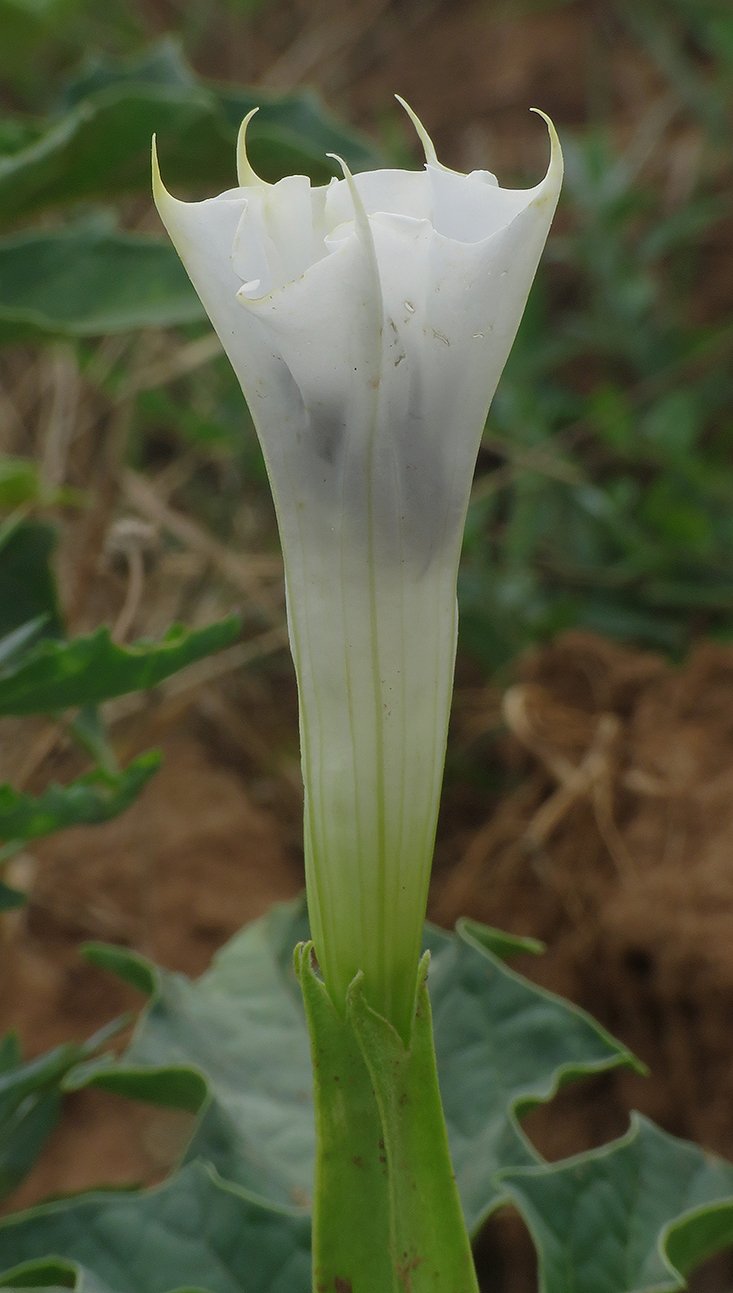
While photographing one of its elongated, trumpet-like flowers ...
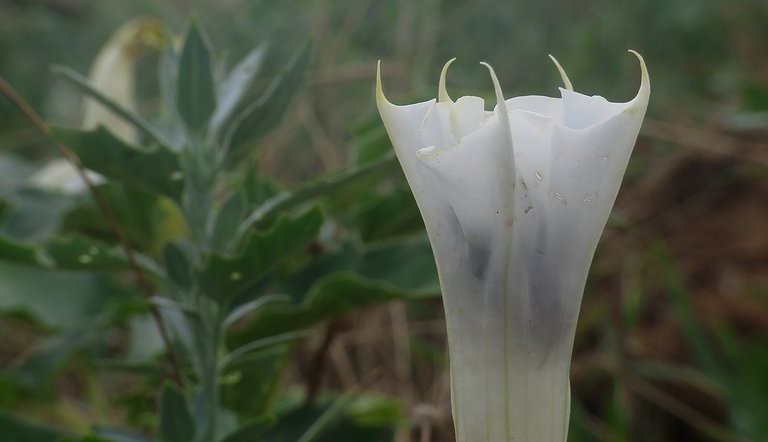
... I noticed an undefined shape through the semi-translucent petals.
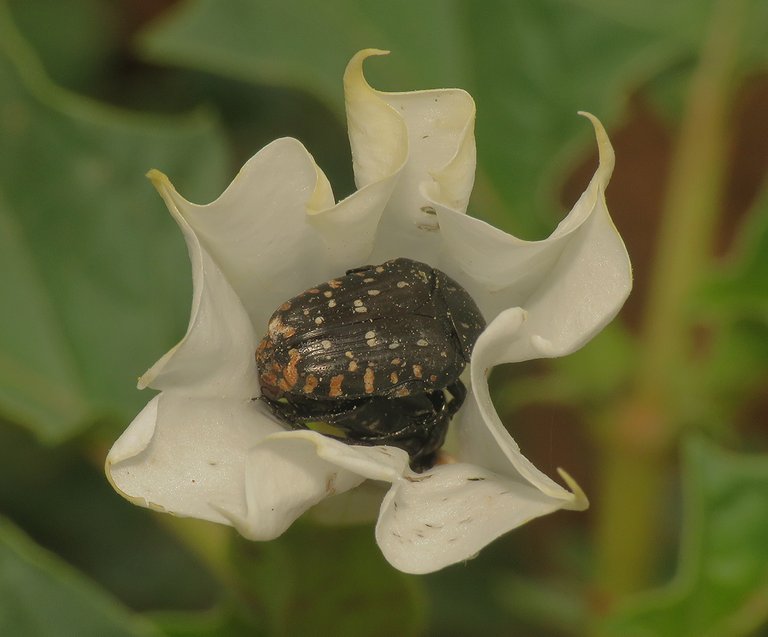
A look from above revealed two Oxythyrea funesta beetles.
At one point, one of the beetles decided to leave the flower, so I was able to take a couple of shots in which you can take a better look at this species.
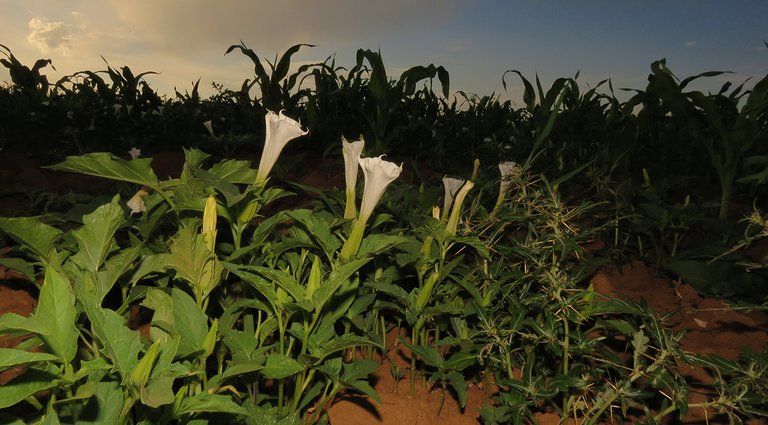
The flowers of Datura stramonium provide food and shelter for many insects.
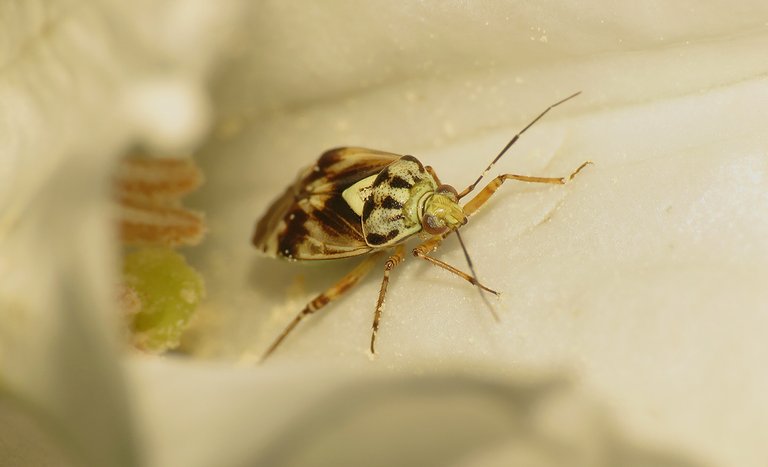
Here you can see the Lygus pratensis, a small bug from the Miridae family.
The Oxythyrea funesta feed mainly on pollen, but sometimes the soft floral organs also get eaten.

The beetle in this series of photographs ...
... bore its way through the base of the flowers, making a bit of damage along the way.
I took plenty of shots around these flowers ...
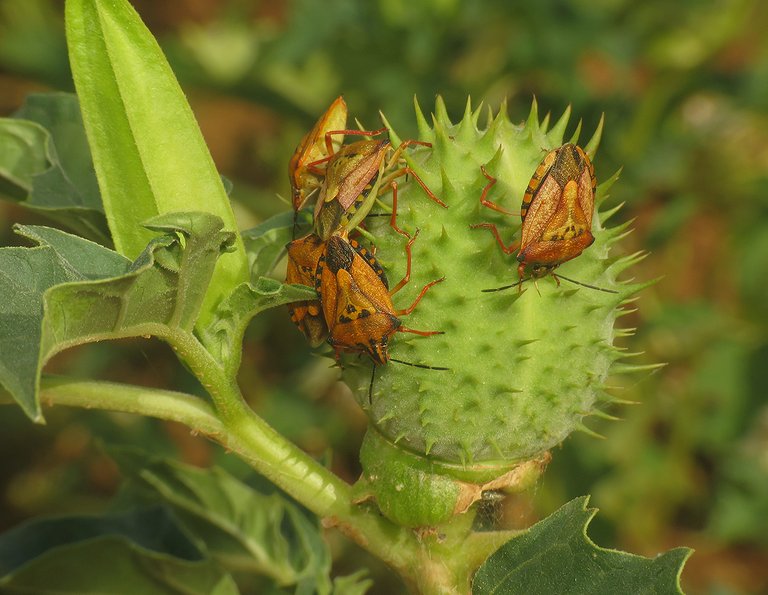
... but the flowers aren't the only part of the Datura stramonium plant that insects find attractive. Here you can see the green, unripe fruit ...
... covered with Carpocoris purpureipennis shield bugs that feed by sucking the juices of the plant.
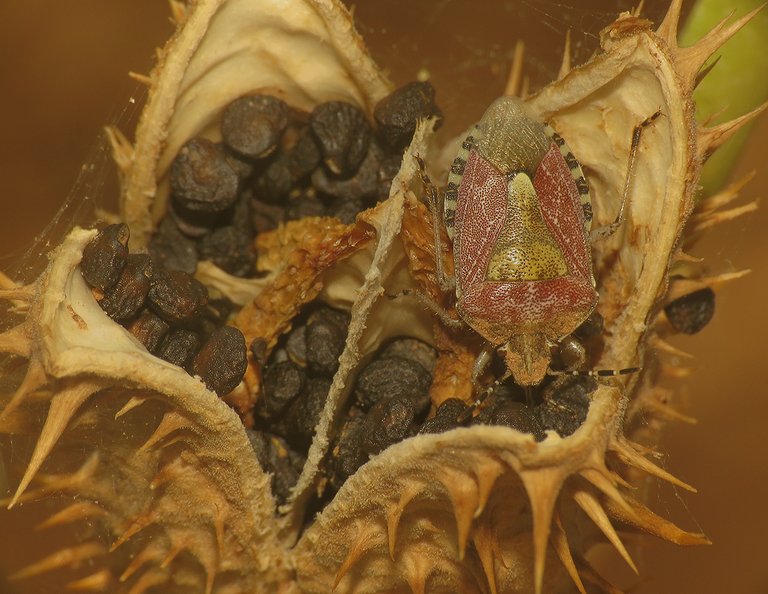
Some fruits were dry and ready to release their seeds. The Dolycoris baccarum shield bug was feeding on those seeds.
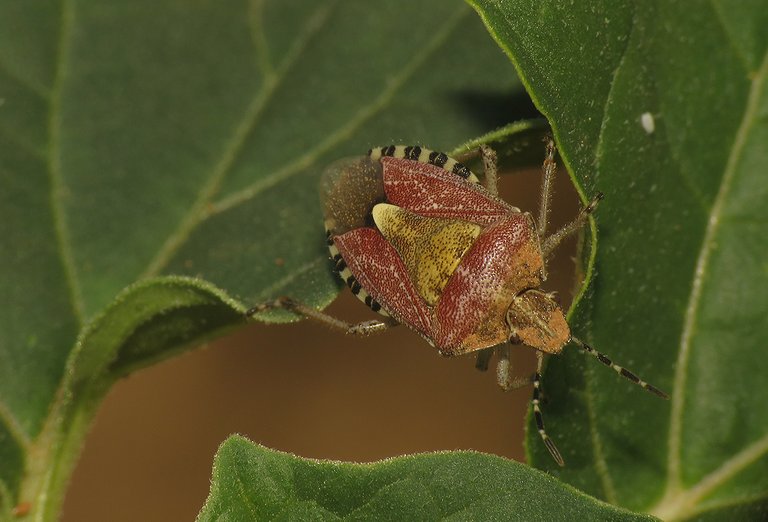
Here you can see the same kind of bug on the leaf of the plant.
On another leaf, I found this green bug from the Miridae family, the Closterotomus norwegicus.
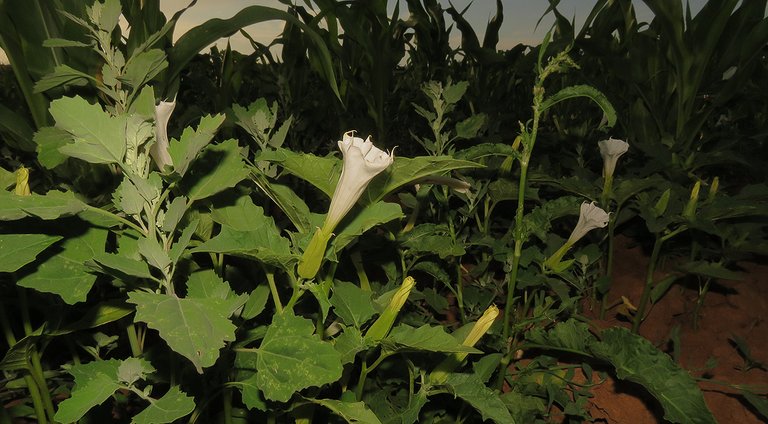
This place was a cultivated field just a few weeks ago, and the corn mixed with various weeds was still growing on its edge.
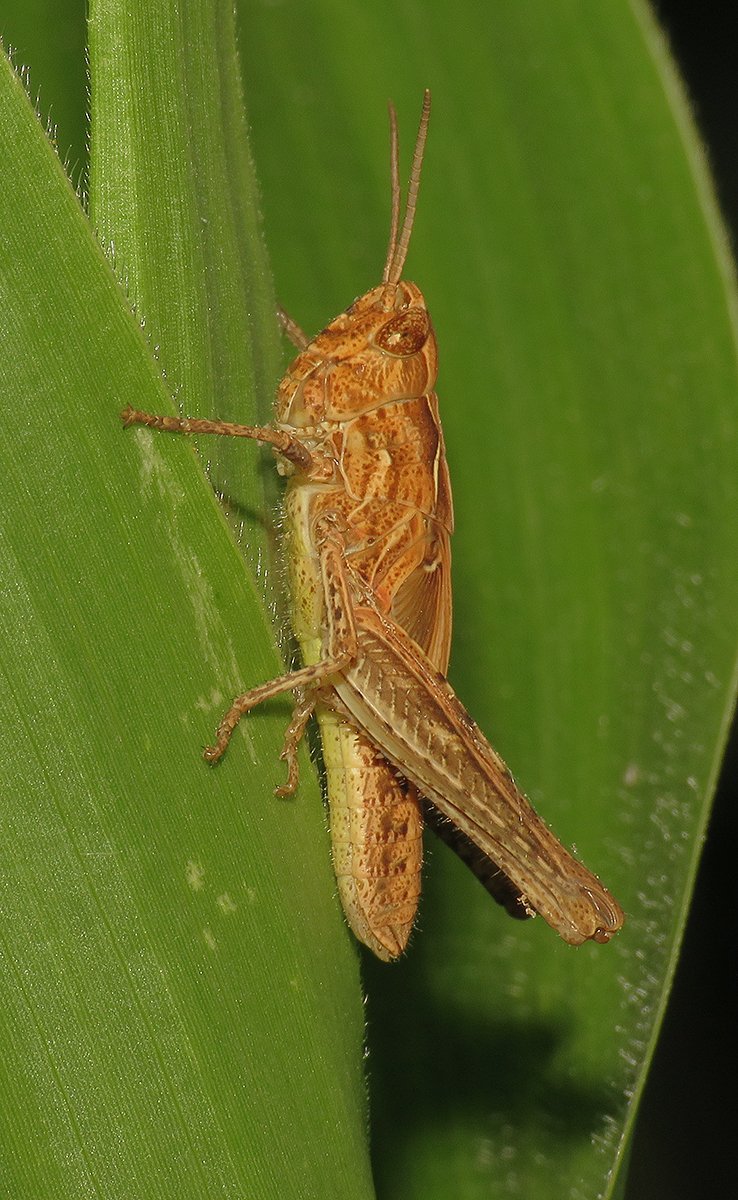
At one point this nymph of the Chorthippus maritimus grasshopper that was resting on the corn ...
... hopped from that plant ...
... and landed on Datura stramonium.
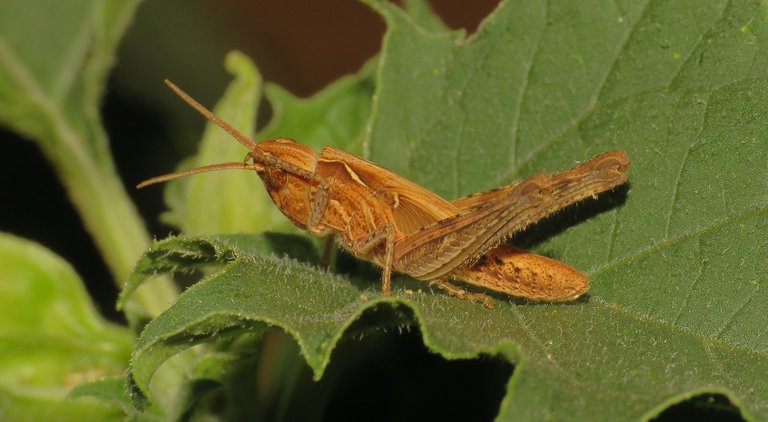
I took quite a few photographs while the young grasshopper was cleaning its eyes.
This nymph of some species that I wasn't able to identify was photographed on the reddish soil under the plant.
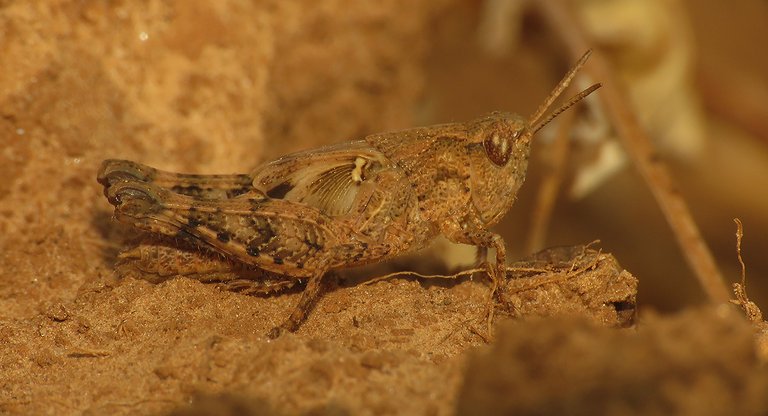
The young grasshopper was well camouflaged on that surface.
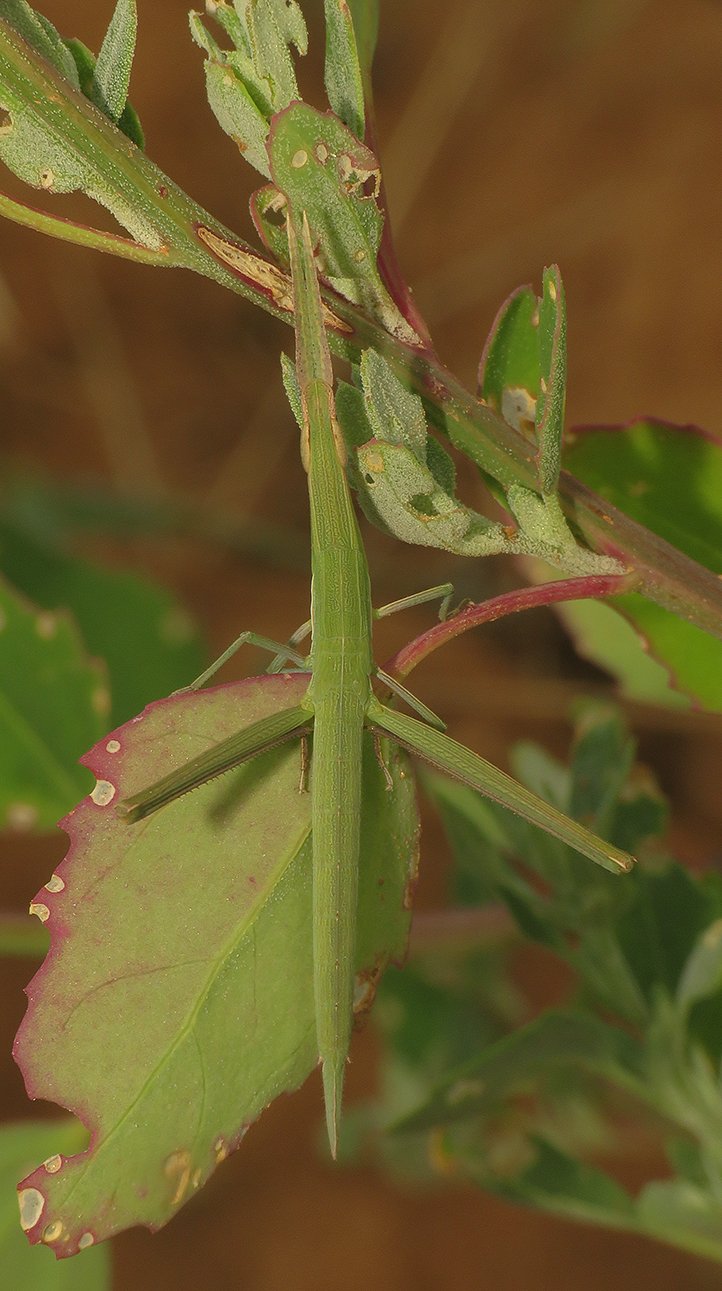
If you take a good look at this photograph, you'll see the nymph of the Acrida ungarica grasshopper. This species can become invisible when on the vegetation ...
... but is easy to spot down on the ground. Although it gets easily mistaken for a young shoot of grass.
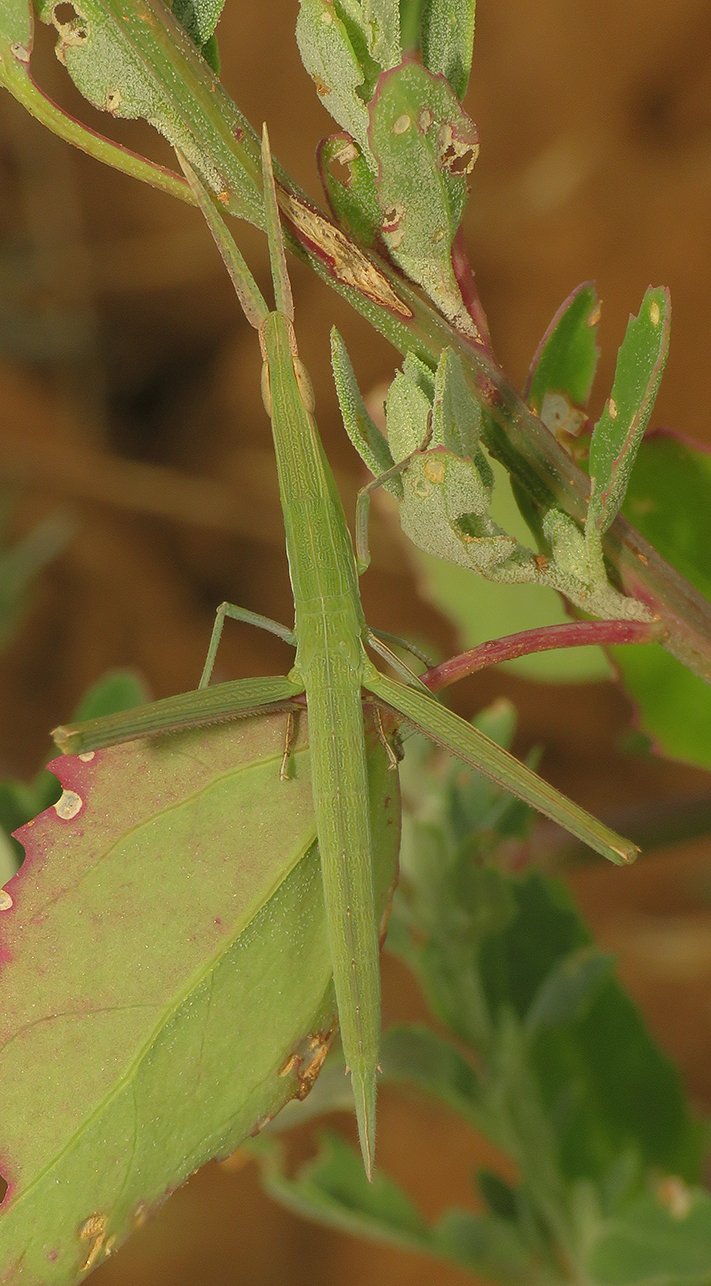
In this photograph, the Acrida ungarica is resting on the Chenopodium album plant ...
... that often covers large stretches of cultivated fields after the harvest.
At one point a group of cows appeared from the cypress grove in between two fields ...
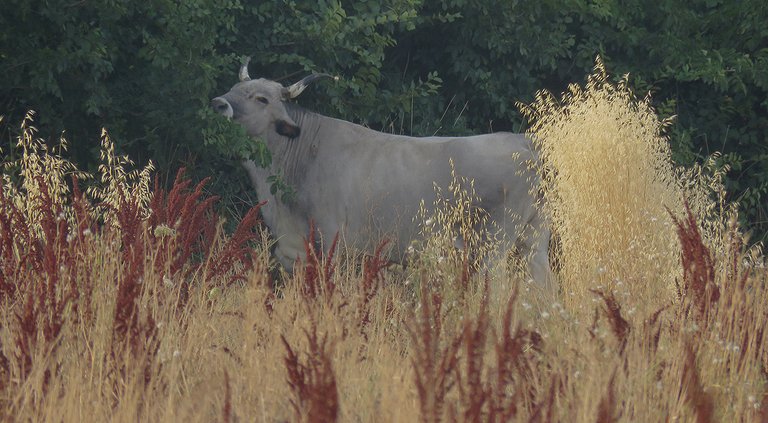
... and slowly passed me by.
I watched them for a while chewing the leaves of the shrubs and trees ...
... and then mounted the macro lens again.
Here you can see a small fly from the Tephritidae family. Can't tell you the exact species. It was photographed on the Datura stramonium leaf.
This leafhopper was photographed on a leaf of corn. It's difficult to identify the exact species because quite a few of them look very similar.
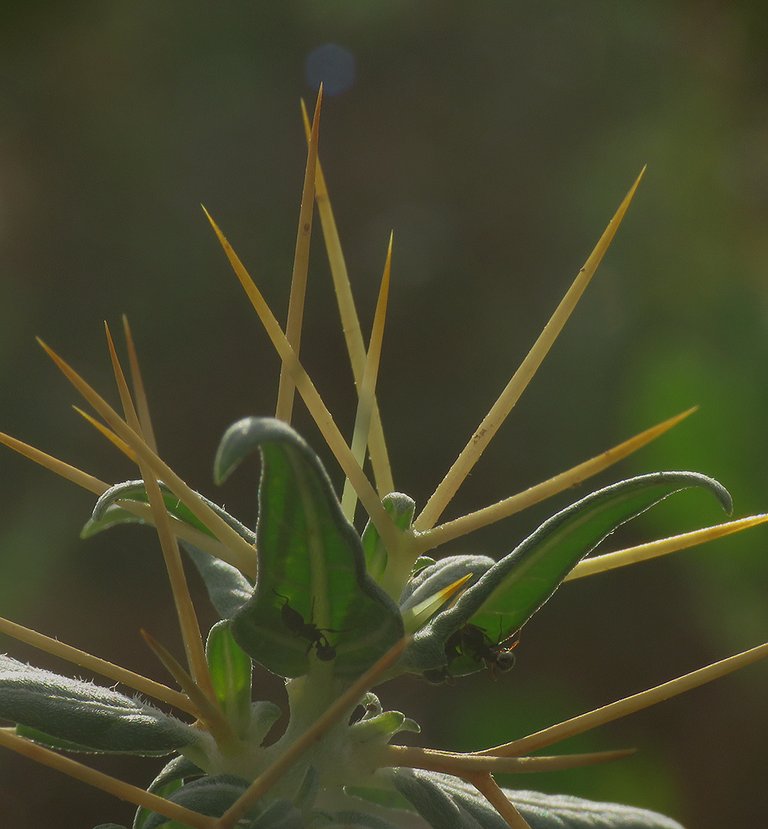
Here you can see the long, sharp thorns ...
... of the Xanthium spinosum plant.
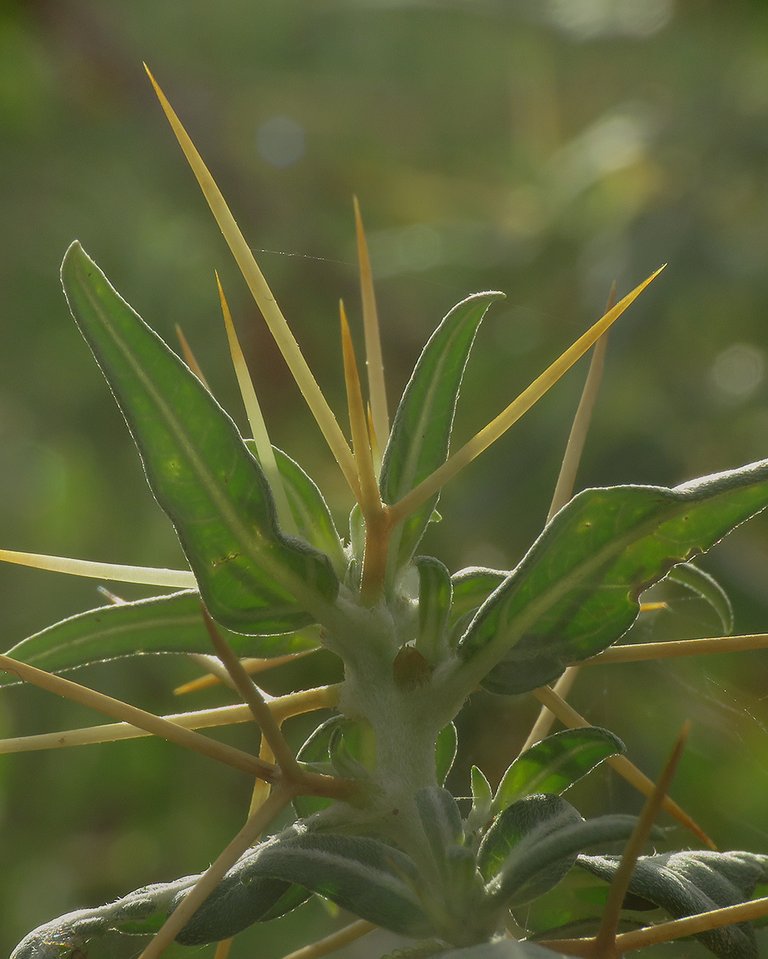
This thorny plant regularly appears along the edges of these fields.
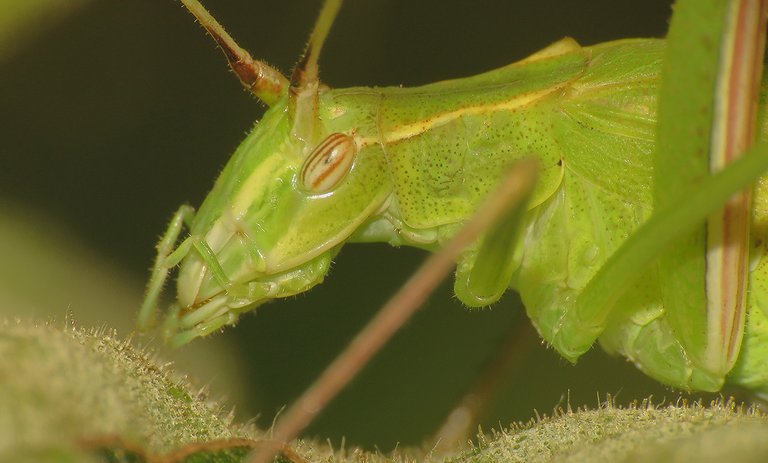
Here you can see a close-up portrait of a bushcricket ...
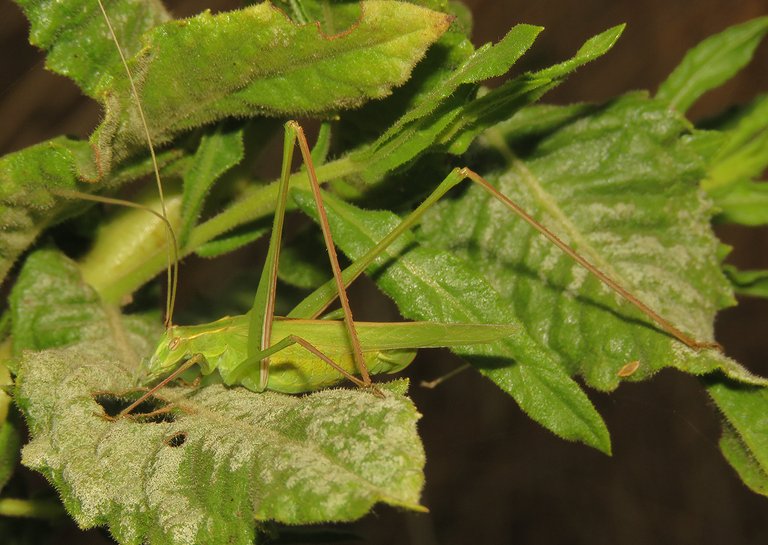
... well - camouflaged on the Dittrichia viscosa plant.
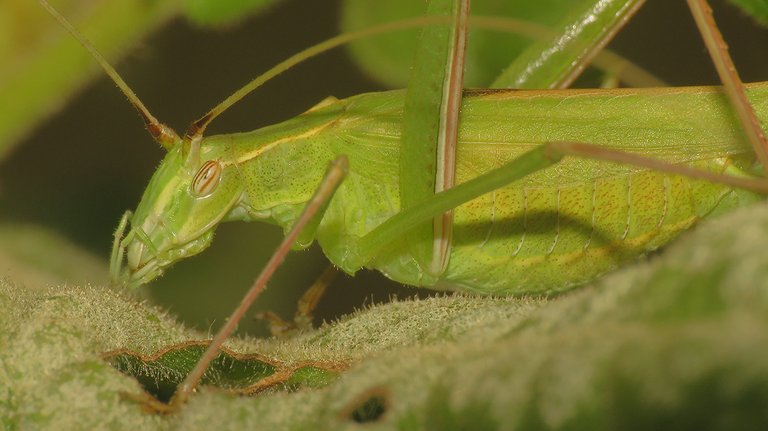
Tylopsis lilifolia is the name of this elegant species from the Tettigoniidae family. These bushcrickets come in various shades of colors from green to gray and brown.
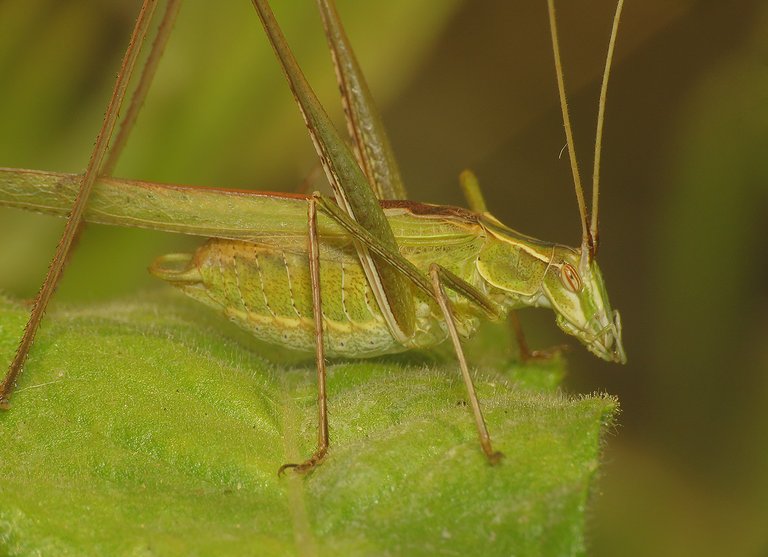
If you compare this Tylopsis lilifolia to the one in the previous shot ...
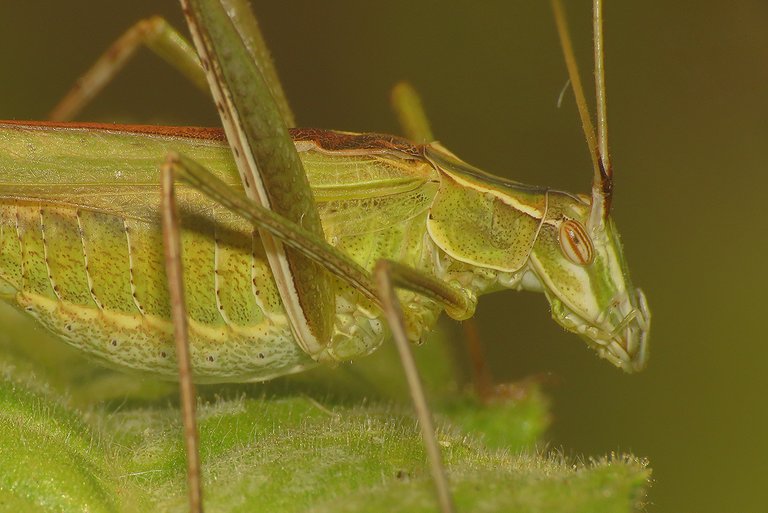
... you'll notice that its colors are slightly different.

Here you can see the well-developed nymph that will soon become an adult.
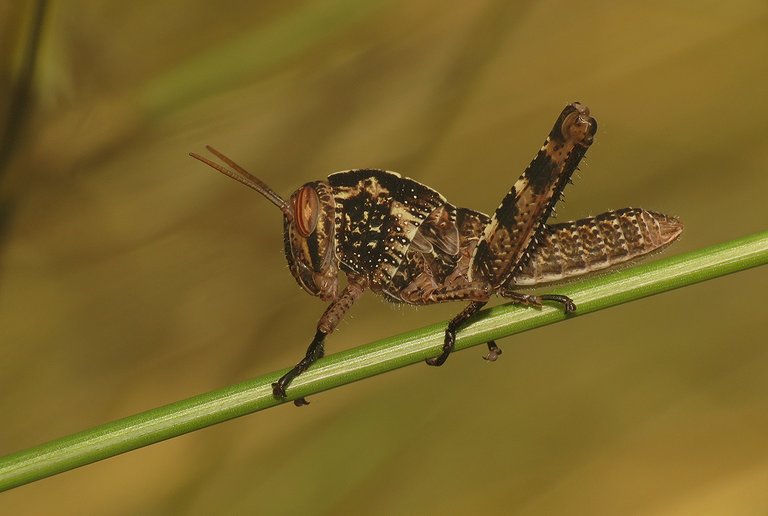
The nymphs of the Anacridium aegyptium grasshopper also come in many colors.
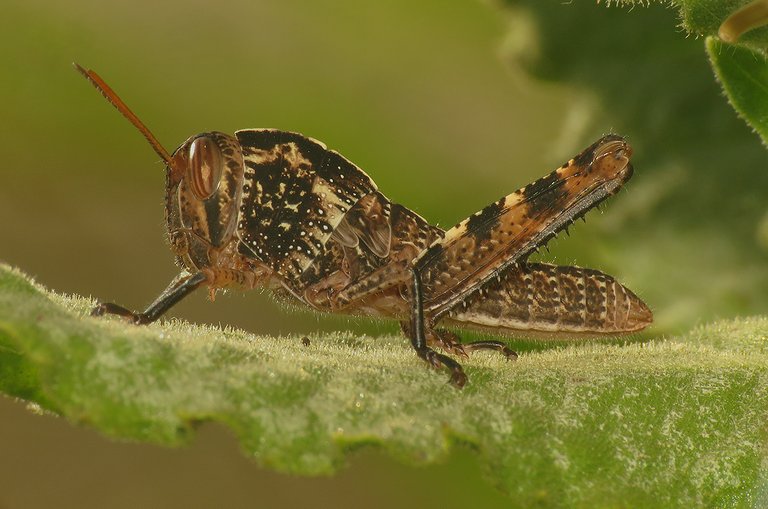
I often encounter the green, pale gray, and reddish-brown ones. In my experience, the variation shown in these photographs is relatively rare here where I live. In the first of these two shots, the young grasshopper was photographed on the stem of some grass, while in the second photograph, the same grasshopper was posing on the leaf of the Dittrichia viscosa.
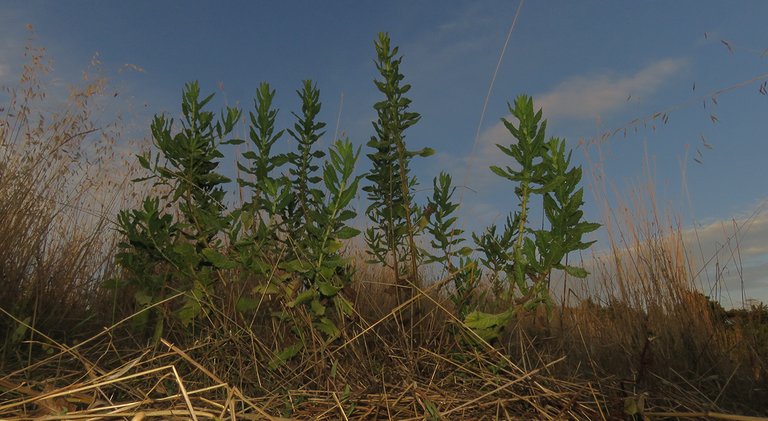
This plant often covers large stretches of terrain near the sea.
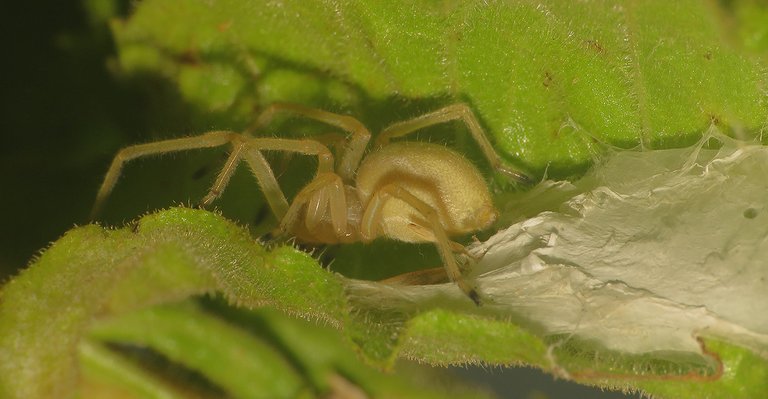
This spider ...
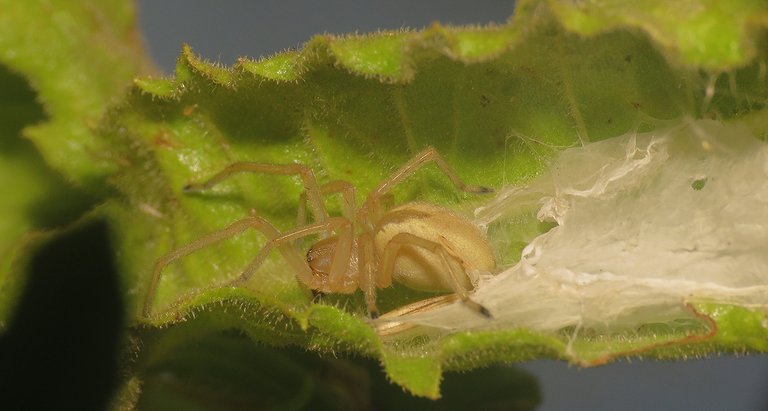
... the Cheiracanthium mildei ...
... has built a nice sack made of silk on the underside of the slightly folded leaf.
There is always something cool to photograph here on the Dittrichia viscosa.
This is the Kochiura aulica, a small spider that has built its web among the foliage near the top of the plant.
These three shots were taken on the same plant. Here you can see the young nymph of some grasshopper that I wasn't able to identify, lit in three different ways by the ambient light and the flash of my camera.

Here you can take one last look at Dittrichia viscosa because this plant won't appear in the photographs that follow.
In this triptych, you can see some minuscule bug that I never noticed before and wasn't able to identify.
Don't remember where was photographed. I mean, on which plant the bug was found.
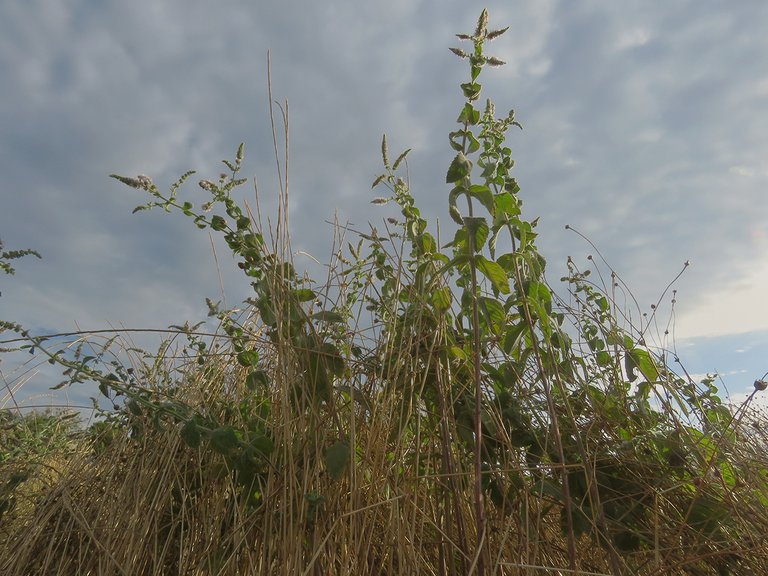
Here you can see a group of aromatic Mentha suaveolens plants and in the following shot ...
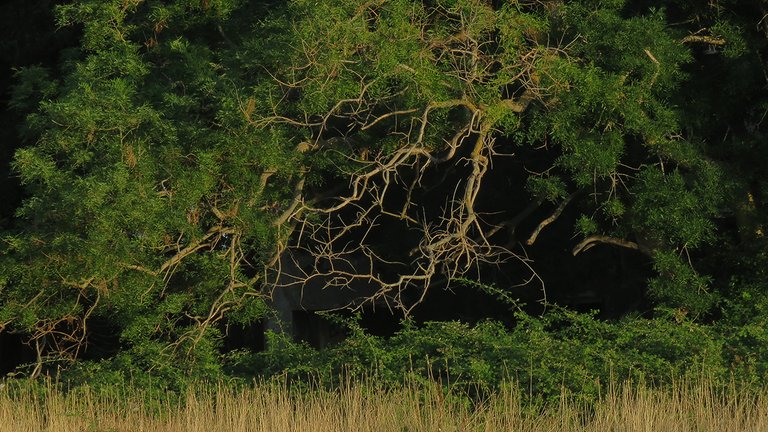
... you can take a look at the lower branches of the trees on the edge of the meadow.
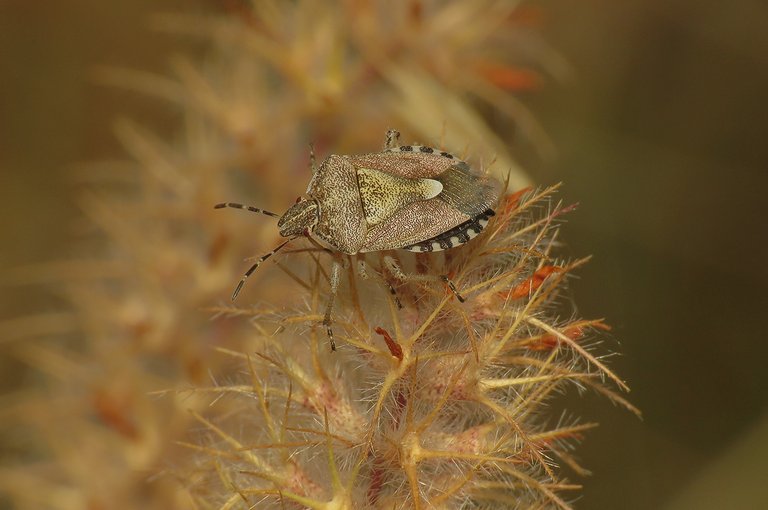
This shield bug, the Dolycoris baccarum ...

... was photographed on the dried-out flowerheads of the Trifolium angustifolium plant.
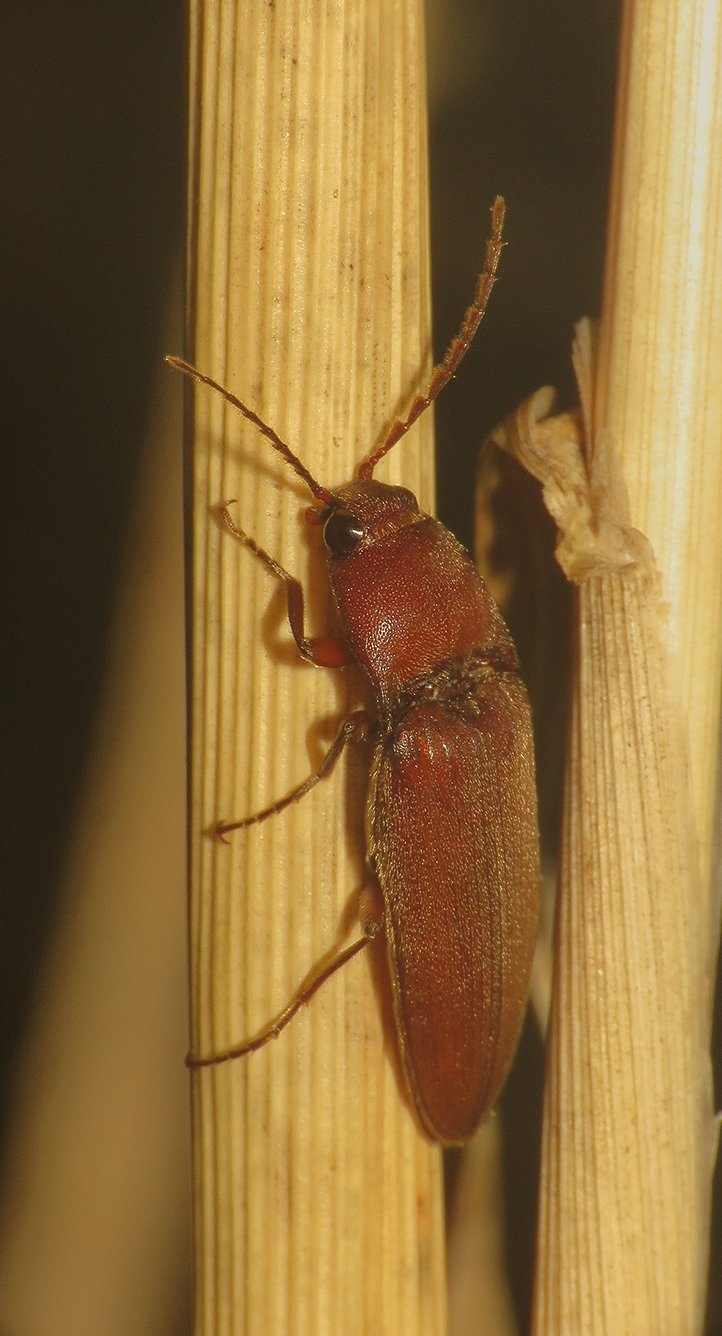
Here you can see a beetle from the Elateridae family. Beetles from this family are commonly known as click-beetles. Can't tell you the exact species. The insect was photographed on the stem of the Hordeum murinum grass.
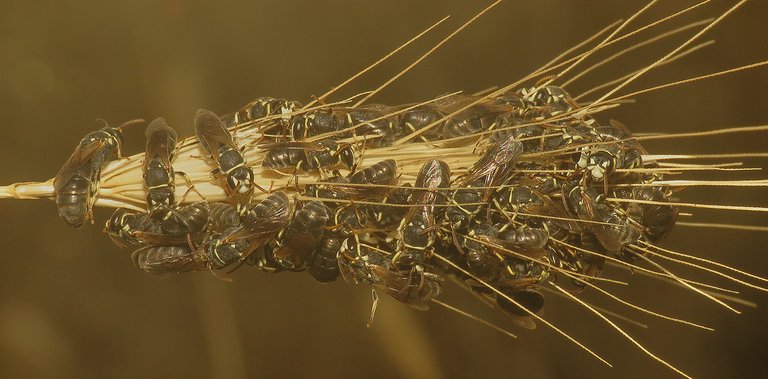
On the top of the same plant, I photographed a group of small bees.
This is some species from the genus Hylaeus of the Colletidae family. That's all I can tell you about these bees that congregate in the evening to spend the night in groups, usually on the ear of grass.
AND THAT'S IT. HOPE YOU ENJOYED THESE MACRO SCENES FROM THE LAST SUMMER. AS ALWAYS IN THESE POSTS ON HIVE, THE PHOTOGRAPHS ARE MY WORK - THE END.

